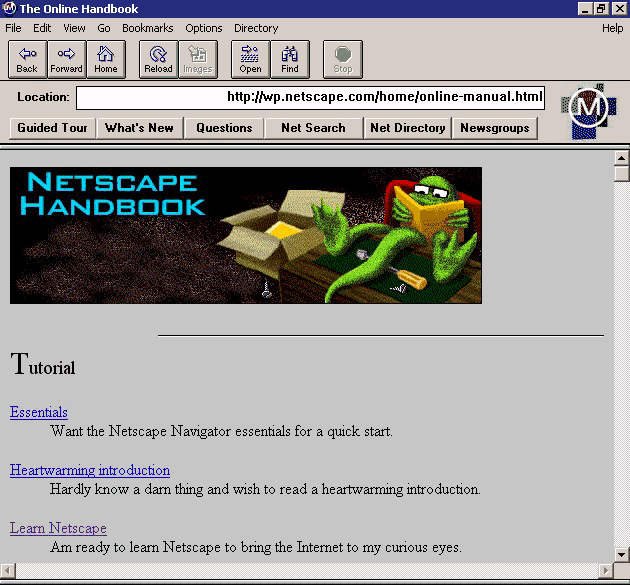The Internet
Web Browsers
When Tim Berners-Lee invented the web, he was expecting it to be used by fellow researchers and academics, so while it was a huge step up from earlier internet tools, it was still not designed for use by the broader public.
The first web browsers (the tools we use to navigate websites) were extremely basic by today’s standards. As an example, it wasn’t unusual to view the text of a webpage in a web browser and then open a separate application to view any associated images.
In 1993 Marc Andresson was a part-time student programmer at the National Center for Supercomputing Applications (NCSA) at the University of Illinois, and an early user of the web.
Mosaic
Marc recognised its huge potential but also knew that mainstream growth would require better, and more simple-to-use web browsers than what was currently available. He set out to work with fellow students and created the _Mosaic _browser.
While the first browsers were created for researchers and academics, Mosaic was easy for non-experts and offered built-in support for graphics and images. It proved incredibly popular from launch and quickly became the most popular browser on the early web.

As Mosaic grew in popularity, Marc started to conflict with university faculty members over the project’s future direction. He ultimately decided to leave Mosaic and move to Silicon Valley, where he joined Jim Clark to start Netscape.
Netscape
Netscape would launch a browser called Netscape Navigator that built upon Mosaic’s early success and appeal, quickly overtaking Mosaic to become the market-leading browser. Only 16 months after it was founded, Netscape had the first successful IPO_ _of the “dot-com boom” era, making the founders and early employees instant millionaires.

Microsoft Internet Explorer
The huge and sudden growth of the internet caught the attention of Bill Gates and the team at Microsoft, and they decided to enter the web browser wars with their browser, Internet Explorer.
They were late to the race, starting after Netscape, but they had a massive (and arguably unfair) advantage. Microsoft could offer Internet Explorer for free as part of their Windows operating system, making it the default browser choice for the millions of Windows users starting to use the web for the first time.
In 1996 Netscape had 86% of the browser market, but by 1999 the market had swung to Microsoft, which had reached over 75% market share for Internet Explorer.
Mozilla
Netscape eventually admitted defeat and decided to open source their browser, creating Mozilla. Mozilla went on to release the Firefox series of browsers that were popular in the early 2000s and are still being released today.
Apple Safari
Apple entered the browser market in 2003 with Safari, and while it is extremely popular with users on Apple’s Mac OS and iOS operating systems, it has never been able to grab a significant share beyond those markets.
Google Chrome
In 2008 Google released the Chrome browser, based on open source components from Firefox and Safari.
Chrome proved extremely popular with users, many choosing to leave Internet Explorer and Firefox. Microsoft tried to counter the loss of market share by killing Internet Explorer and replacing it with a new browser called Edge, but have had limited success. Chrome has gone on to become the dominant browser globally, leadinging market share across PCs, smartphones and tablets.